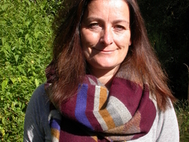For some years Dr. Gerlinde Klatte, Dr. Helga Prüßmann-Zemper and Dr. Katharina Schmidt-Loske focused on research on the history of origin of the Tenture des Indes and the Nouvelles Indes. They travelled a good deal as researchers. They are editors & authors of the book, titled:
Klatte/Prüßmann-Zemper/Schmidt-Loske:
Exotismus und Globalisierung
Brasilien auf Wandteppichen:
die Tenture des Indes
Deutscher Kunstverlag, Berlin/München 2016
Further specialists contributed as authors to the success of the book:
Odaira Hansen-Figureira, Bonn
Holger Kürbis, Erfurt
Monika Lodderstaedt-Dürr, Tübingen
Hermann J. Roth, Bonn
Maria Amália de Schmidt de Oliveira, USA
Katja Schmitz-Von Ledebur, Wien
Jean Vittet, Fontainbleau
Generously, museums, archives, institutions and individuals provided us with photos. We are indebted to them: Mobilier national, Paris; Kunsthistorisches Museum, wien;Jagiellonische Bibliothek, Krakau; Arader Galleries, NY;Musée d'art et d'archéologie de la ville de Guéret, Gueret;Instituto Ricardo Brennand, Recife;J. Paul Getty Museum, LA;Department of information, Government of Malta, La Valetta; Archives of Arundel Castle, His Grace the Duke of Norfolk, Arundel; Museum Kurhaus Kleve, Kleve;Musée des Beaux-arts, Reims; De Witt, Manufacture Royale de Tapisseries, Mechelen; Museo Palacio de Viana, Córdoba; Beatrice von Wattenwyl-Haus, Bern, Erzbischöfliches Schloss, Ober St. Veit, Wien; Stift Melk and Welt Kulturen Museum, Frankfurt.







